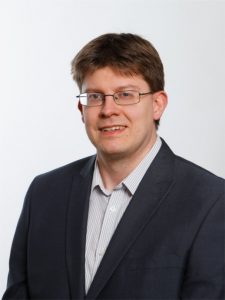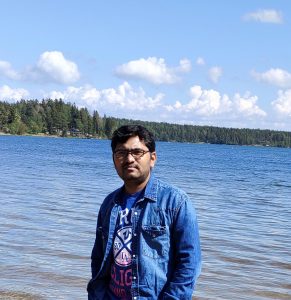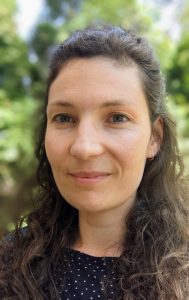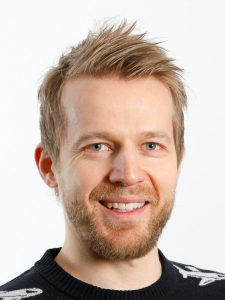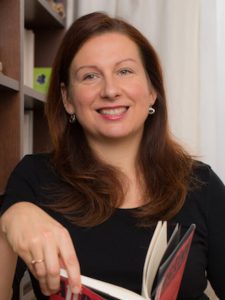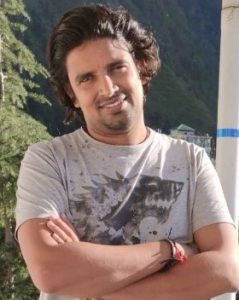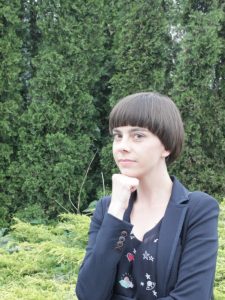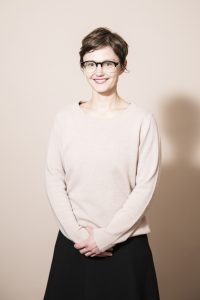
Mona Mannevuo is a Postdoctoral Researcher at TIAS and the Department of Contemporary History
This post is based on a talk given at the international online symposium Across Boundaries in Sciences. The event was hosted by All European Academics (ALLEA) and the Council of Finnish Academies on 5 May 2021. The program, talks and more detailed information of the event can be found here.
Interdisciplinarity, multidisciplinarity, transdisciplinarity… The cherished idea of crossing boundaries in science has many names. Sometimes, we forget that boundary crossings may be a risky business for young academics working in highly precarious and competitive academia.
Although I am at an early stage of my career, I have a multidisciplinary academic background in the humanities and social sciences. I did my MA in cultural history (2009), but I defended my PhD in gender studies (2015). After finishing this PhD, I was employed as a research fellow in a FiDiPro project ‘Social Science for the Twenty-First Century: Employment Activation and the Changing Economy-Society Relation’. Subsequently, I was recruited to the ‘Tackling Biases and Bubbles in Participation’ (BIBU) consortium. While contributing to this project, my research environment was the Centre for Parliamentary Studies.
Since January 2021, I have been working on my own three-year post-doctoral project at Turku Institute for Advanced Studies. At TIAS, my affiliation is contemporary history, but I am also leading a project titled ‘Communication across borders: Shifting boundaries of politics, science and public relations’, which is funded by the Helsingin Sanomat Foundation.
Working in these different environments has taught me several things. First of all, my background has equipped me with rich knowledge of various fields and perhaps even strategic tools to survive in contemporary academia. However, academia is quite conventional and hierarchical, and I sometimes feel like an outsider (see Interdisciplinary Madness comic). In fact, I can feel a bit queasy when someone asks what my actual field of study is. I would like to pretend that it is just my curiosity that has led me to this situation, but truthfully, it is the difficulty of making long-term plans in contemporary academia.
Academic life as a succession of projects
Whereas ‘interdisciplinarity’ sounds exciting as a buzzword, the reality in interdisciplinary projects can be quite exhaustive and draining. In particular, early-career scholars often need to change topics rather drastically according to the themes of the projects for which they are employed.
It also feels like the society puts unrealistic expectations on interdisciplinary projects: they are expected to change the world, solve societal maladies and yield an astronomical return on invest. The problem is not the idea of interdisciplinarity but the project culture in which, paraphrasing Eve Boltanski and Luc Chiapello (2007), the actual content of the project seems less important than the general impression of networked scholars’ ability to juggle competing commitments at once.
But science is not magic. In 2015, when Nature published a special issue on interdisciplinarity, the editorial stated that ‘true interdisciplinary science cannot be rushed’. We may have hopes, but interdisciplinarity research is a risky business, because it often takes time to achieve results. It also takes time to build academic relationships and to see the value in other approaches, but competitive, fast-paced academia does not always foster collegiality.
Therefore, as the Nature editorial continued, we must rethink hierarchies: ‘All involved must be confident that colleagues from other disciplines use equal academic rigour and scientific standing, even if the methods used in rival fields seem alien’. Otherwise, the project exists as one main subject that depletes most of the resources and leaves the partners as orbiting satellites.
The main risk for young scholars working on interdisciplinary projects is that they may not offer career advancement but, rather, advance someone else’s strategic agenda. Thus, early-career scholars need to be acutely aware of the possible power relations in interdisciplinary projects. It is easy to make a project look interdisciplinary, but it is on the ‘shop floor’ where epistemological boundaries are negotiated.
In reality, the political economy of academia does not encourage young scholars to take the risk of crossing boundaries. Instead, they learn to promote interdisciplinarity within proper limits. They learn to ask critical questions, but not too critical, because there is no time for that. They learn to follow their curiosity, but not too much; interesting issues are noted but never actually explored, because the next project is waiting.
The order of knowledge
The problems in interdisciplinary project culture are not entirely new. They were already puzzling critical scholars in the 1950s. In The Organization Man (1956), William H. Whyte ponders how ‘the bureaucratization of the scientist’ leads to ‘projectism’, where scholars play a role set for them by funding committees with the hope of producing a sophisticated research design:
As one young scientist, Walter Roberts puts it: ‘There is a tremendous difference between science as it is done in the laboratory and science as it is reported. True science is helter-skelter, depending on one’s hunches, angers, and inspirations, and the research itself is done in a very personal fashion. Thirty or forty years ago [in the 1920s] it was written up this way. In reporting a great discovery a scientist would say, ‘I was working on such-and-such reaction when I dropped some sulphuric acid by mistake. When I examined it I found, to my surprise, a strange thing going on…’ But today nobody would write it up this way.
It seems, then, that academics have struggled with the idea of instrumental, top-down, problem-focused research for decades. What worries me about the current trend of evidence-based policymaking is that it may give the impression that there is some apolitical, pragmatic way to turn research into the administrative language of ‘best practices’ and ‘what works’. Instead, we have to admit that uncertain times are filled with messy, conflicting interests; the more evidence we have, the more decisions and selections we must make and the more accountable we are for our actions.
Interdisciplinarity as a buzzword may give an impression of consensus. However, critical interdisciplinary research is far from finding the one best solution. Transformative interdisciplinary fields, such as cultural studies and science and technology studies, emerged from the various disciplinary subfields. Indeed, the most interesting problems often evolve in the margins, and they are so strange that they cannot be understood or explained without consulting various actors within and outside the university. From a critical perspective, interdisciplinarity is a strategy – not for instrumental purposes but for restructuring the order of knowledge.
References:
Boltanski, Luc & Chiapello, Eve. The New Spirit of Capitalism. Translated by Gregory Elliott. Verso, 2007. Originally published 1999.
Editorial, ‘Mind Meld’. Nature, Volume 525 Issue 7569, 16 September 2015.
Whyte, William H. The Organization Man. University of Pennsylvania Press, 2002. Originally published 1956.
